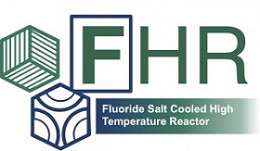The Need for Clean Energy
Climate change increasingly is important as federal, state and local policymakers consider energy supply and greenhouse gas mitigation. Given those concerns and the need for baseload electricity production, policymakers and energy industry leaders are evaluating an expanded role for nuclear power. Carbon mitigation strategies from Princeton University, Columbia University’s Earth Institute, Harvard University and the Pew Center on Global Climate Change have reached a similar conclusion: A clear path toward meeting the global challenge of reducing greenhouse gases relies in part on an expanded portfolio of low-emission sources of electricity, including nuclear power. The worlds’ population is expected to expand from about 6 billion people to 10 billion people by the year 2050, all striving for a better quality of life. As the Earth’s population grows, so will the demand for energy and the benefits that it brings: improved standards of living, better health and longer life expectancy, improved literacy and opportunity, and many others. Simply expanding energy use using today’s mix of production options, however, will continue to have adverse environmental impacts and potential long-term consequences from global climate change. For the Earth to support its population, we must increase the use of energy supplies that are clean, safe, and cost-effective. Prominent among these supplies is nuclear energy.1
Safety & Reliability
Generation IV Reactors will contain advanced safety systems to contest anticipated transients. Their design will minimize core damage to increase reliability. The overall systems will not require offsite emergency response but will rely on a degree of human maintenance to uphold complete integrity. They will operate with wider deployment options and produce alternative energy products such as hydrogen and process heat.2
The PB-FHR uses existing and well understood materials and fuels, coupled with a clean fluoride salt coolant to achieve long material lifetime and reliability. The PB-FHR implements fully passive safety systems for reactivity control and decay heat removal. Licensing models for these passive safety systems are validated with high-fidelity experimental data from test facilities using simulant fluids (water and heat transfer oil). Research related to these facilities is discussed in more detail on the FHR Research Areas page.
Sustainability
Generation IV Reactors will utilize their fuel, produce minimal environmental impact, meet clean air policies, maintain long-term availability and allow for effective waste management. This is all done with the concept to minimize the burden on future generations. Generation IV Reactors will also maintain a life cycle cost advantage over other energy sources even with the associated financial risk.2
The Mk1 PB-FHR fuel has slightly better natural uranium utilization than the ORNL AHTR and typical PWRs, but requires slightly more separative work for enrichment. Overall the four low-enriched uranium designs achieve similar utilization of uranium resources. The Mk1 PB-FHR requires about 3.2 times more dry storage volume for its spent fuel compared to a PWR, but less than half the storage volume needed for the ORNL AHTR and the PBMR. Uranium fuel cycles, as well as with thorium seed-blanket fuel cycles either once-through or closed, and maximum conversion ratios for thorium fuel cycles are now being studied.
Proliferation and Physical Protection
Generation IV Reactors will deter the diversion or theft of weapons-grade materials in addition to providing increased protection against terrorist attacks. These efforts seek to increase public confidence in the security of nuclear energy systems.2
For a PB-FHR, many thousands of pebbles would need to be stolen or diverted to obtain sufficient material to construct a nuclear explosive. The PB-FHR is a very unattractive target for radiological sabotage, due to the inaccessibility of its passive safety systems and the design of the reactor building to withstand aircraft crash. With its online refueling, if the PB-FHR is operated with recycled LWR transuranics fuel or recycled U-233 fuel from a thorium cycle, these fuels can be partially irradiated in a PB-FHR co-located with the fuel fabrication facility, prior to shipment to off-site PB-FHR reactors, assuring that all PB-FHR fuel that is transported has sufficient radiation levels to be fully self protecting.

